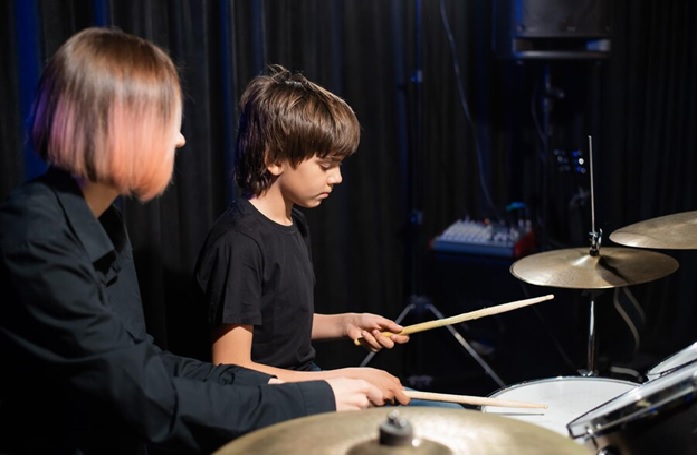Music holds a special place in childhood development, fostering creativity, enhancing cognitive skills, and nurturing a lifelong love for the arts. Engaging young learners in music lessons requires a blend of creativity, playfulness, and structured learning. Here are some innovative approaches to ensure that music lessons are not only educational but also enjoyable for children:
1. Interactive Musical Games
Introducing interactive games can transform music lessons into exciting adventures. Games like musical chairs with instruments, rhythmic treasure hunts, or musical storytelling where children create sounds to accompany a story can make learning musical concepts like rhythm and melody delightful and memorable.
2. Incorporating Technology
Technology can be a powerful tool to capture children’s interest in music. Utilizing apps and software that gamify learning music theory, such as interactive piano apps or rhythm training games, can make abstract concepts more accessible and engaging. Virtual instruments also allow children to experiment with different sounds and create their own compositions, fostering creativity.
3. Musical Storytime
Integrating music with storytelling creates a multisensory experience that captivates young minds. Choose storybooks with musical themes or characters and incorporate songs or musical instruments into the narrative. Encouraging music lessons for children to compose their songs inspired by stories stimulates imagination and emotional expression through music.
4. Dance and Movement Activities
Movement is inherent to music, making dance a natural companion to music lessons. Incorporate simple dance routines or movement activities that synchronize with the rhythm and tempo of songs. This not only enhances children’s understanding of musical phrasing and dynamics but also channels their energy constructively.
5. Instrument Exploration Sessions
Allowing children to explore various musical instruments hands-on sparks curiosity and helps them discover their musical preferences. Organize sessions where children can touch, play, and experiment with different instruments under guidance. This tactile experience fosters appreciation for different sounds and encourages active participation in learning music.
6. Collaborative Music Projects
Creating opportunities for collaborative music-making fosters teamwork and social skills while enhancing musical proficiency. Assign group projects where children work together to compose songs, create musical arrangements, or perform as a band. Collaborative projects instill a sense of accomplishment and pride in their musical achievements.
7. Theme-based Music Workshops
Organize themed music workshops that align with children’s interests or seasonal themes. Whether it’s exploring music from different cultures, composing songs about nature, or creating musical soundtracks for imaginary adventures, themed workshops provide a context for learning while making it fun and relevant to children’s experiences.
8. Incorporating Visual Arts
Integrating visual arts with music lessons stimulates creativity and enhances children’s understanding of music concepts. Activities like creating musical instruments from recycled materials, designing album covers for imaginary bands, or drawing visual representations of musical compositions encourage interdisciplinary learning and artistic expression.
Conclusion
Incorporating creativity, playfulness, and interactive learning methods into music lessons is key to making them enjoyable and engaging for children. By fostering a supportive and stimulating musical environment, educators and parents can nurture children’s innate musical abilities, cultivate a lifelong appreciation for music, and empower them to express themselves creatively through the universal language of music.

